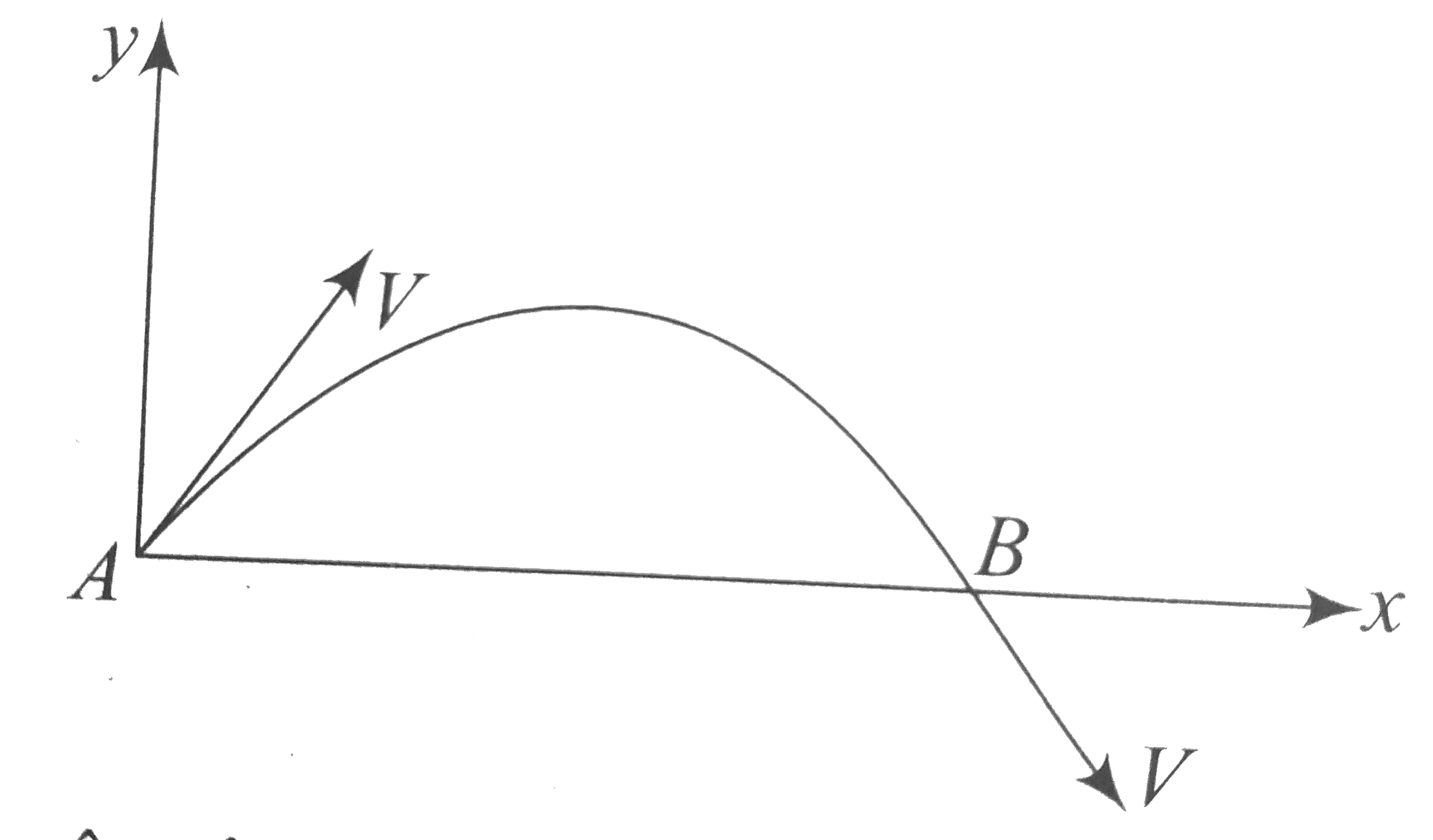The velocity of an object at t =0 is →v0=−4ˆj m/s . It moves in plane with constant acceleration →a=(3ˆi+8ˆj)m/s2. What is its velocity after 1 s?
The correct Answer is:5 m/s at an angle of 53∘ x -axis.
To find the velocity of the object after 1 second, we can use the equation of motion in vector form:
1. Identify the initial conditions:
- Initial velocity →v0=−4^j m/s
- Acceleration →a=3^i+8^j m/s²
- Time t=1 s
2. Write the equation of motion:
The equation for the final velocity →v is given by:
→v=→v0+→at
3. Substitute the known values:
→v=(−4^j)+(3^i+8^j)⋅1
This simplifies to:
→v=−4^j+3^i+8^j
4. Combine the components:
Combine the ^j components:
→v=3^i+(−4+8)^j=3^i+4^j
5. Calculate the magnitude of the velocity:
The magnitude of the velocity |→v| can be calculated using the Pythagorean theorem:
|→v|=√(3)2+(4)2=√9+16=√25=5 m/s
6. Final Result:
The velocity of the object after 1 second is:
→v=3^i+4^j m/sand its magnitude is 5 m/s
- Initial velocity →v0=−4^j m/s
- Acceleration →a=3^i+8^j m/s²
- Time t=1 s
The equation for the final velocity →v is given by:
→v=→v0+→at
→v=(−4^j)+(3^i+8^j)⋅1
This simplifies to:
→v=−4^j+3^i+8^j
Combine the ^j components:
→v=3^i+(−4+8)^j=3^i+4^j
The magnitude of the velocity |→v| can be calculated using the Pythagorean theorem:
|→v|=√(3)2+(4)2=√9+16=√25=5 m/s
The velocity of the object after 1 second is:
→v=3^i+4^j m/sand its magnitude is 5 m/s
Topper's Solved these Questions
- MOTION IN A PLANEBOOK - AAKASH INSTITUTE ENGLISHCHAPTER - MOTION IN A PLANEEXERCISE - Assignement section -A Objective (one option is correct)
50 Videos
- MOTION IN A PLANEBOOK - AAKASH INSTITUTE ENGLISHCHAPTER - MOTION IN A PLANEEXERCISE - Assignement section -B Objective (one option is correct)
29 Videos
- MOTION IN A PLANEBOOK - AAKASH INSTITUTE ENGLISHCHAPTER - MOTION IN A PLANEEXERCISE - llustration 1 :
1 Videos
- MOCK_TEST_17BOOK - AAKASH INSTITUTE ENGLISHCHAPTER - MOCK_TEST_17EXERCISE - Example
15 Videos
- MOTION IN A STRAIGHT LINEBOOK - AAKASH INSTITUTE ENGLISHCHAPTER - MOTION IN A STRAIGHT LINEEXERCISE - ASSIGNMENT (SECTION - D)
15 Videos
Similar Questions
A body starts with a velocity 2ˆi+3ˆj+11ˆkm/s and moves with an acceleration 10ˆi+10ˆj+10ˆkm/s2. What is its velocity after 0.2 seconds ?
View SolutionA body starts with a velocity 2ˆi+3ˆj+11ˆkm/s and moves with an acceleration 10ˆi+10ˆj+10ˆkm/s2. What is its velocity after 0.2 seconds ?
View SolutionThe initial position of an object at rest is given by 3ˆi−8ˆj. It moves with constant acceleration and reaches to the position 2ˆi+4ˆj after 4s. What is its acceleration ?
View SolutionA particle starts from the origin at t=Os with a velocity of 10.0ˆjm/s and moves in the xy-plane with a constant acceleration of (8ˆi+2ˆj)m/s−2. What time is the x-coordinate of the particle 16m?
View SolutionA particle starts from the origin at t = 0 s with a velocity of 10.0ˆj m/s and moves in plane with a constant acceleration of (8ˆi+2ˆj)ms−2. The y-coordinate of the particle in 2 sec is
View SolutionThe velocity of an object is given by →v=(6t3ˆi+t2ˆj)m/s . Find the acceleration at t = 2s.
View SolutionThe velocity of an object is given by →v=(6t3ˆi+t2ˆj)m/s) . Find the acceleration at t = 2s.
View SolutionStarting from the origin at time t = 0 , with initial velocity 5ˆjms−1 , a particle moves in the x - y plane with a constant acceleration of (10ˆi+4ˆj)ms−2 . At time t , its coordinates are (20m,y0m) . The value of t and y0 are , respectively :
View SolutionThe velocity of a projectile at the initial point A is (2ˆi+3ˆj)m/s. Its velocity (in m/s) at point B is

View SolutionThe position of an object is given by →r=(9tˆi+4t3ˆj) m. find its velocity at time t= 1s.
View Solution
